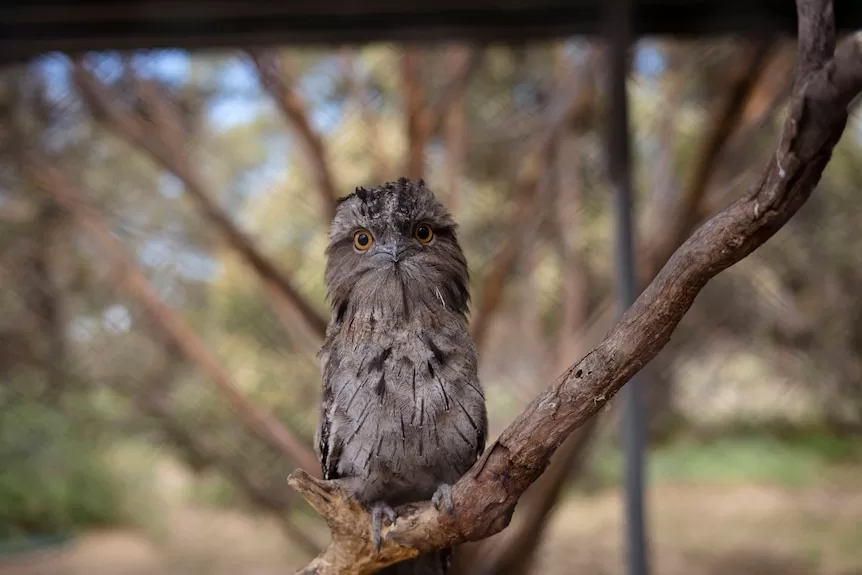- In short: Native species are being harmed in record numbers according to Victoria’s wildlife rescue service.
- Clipped wings, degloved paws and bullet wounds point to widespread abuse and illegal pet-keeping.
- What’s next? More extreme weather events and cars on the road paint a dire picture for animals’ survival in years to come.
As an interstate train driver, Stacy Whitehorse thought she was used to animals dying under her wheels, until eventually she hit her limit.
Readers are advised this story contains details some people might find distressing.
“One day coming into [regional SA city] Murray Bridge I hit a mother possum and her backrider joey and something in my head just snapped,” she said.
She gave up her lucrative career to start a rescue shelter in western Victoria, where she works today rehabilitating native birds, marsupials and reptiles.
At the same time, she is pursuing a master’s degree in veterinary forensic science to better understand the increasingly common cases of cruelty toward animals she rescues.
“Up to 30 per cent of animals here have had some sort of non-accidental injury,” she said.
“I’ve had joeys’ legs degloved because they’ve probably killed mum and ripped joey out of the pouch.”
“You get birds that people have clipped their wings.
“There’s car strikes, there’s failed shootings, you name it.”
Harm often unreported
Wildlife Victoria, the state’s animal emergency response service, received a record number of calls for sick and injured wildlife in 2023.
“We received over 130,000 calls [last year]. The increase in demand is ongoing and the rate of increase is increasing,” head of external relations Meg Butler said.
Ms Butler said cruelty cases were a persistent issue.
“Gunshot wounds to kangaroos is the most common species and cause of cruelty, but possums also fall victim to cruelty as well. It [frequently] goes unreported,” she said.
Illegal pets
Many of the injuries Ms Whitehorse rehabilitates suggest wild animals have been taken and kept illegally as pets.
“People do it. Usually if they’re young animals they finish up here,” she said.
“They end up sick and people bring them here and say, ‘Oh I’ve just found this’ and you know they haven’t.”
The number of people keeping native wildlife as pets is difficult to track and Victoria Police would not give an estimate when asked by the ABC.
In 2022, a 77-year-old Albany man was killed by a kangaroo that police said he was keeping as a pet.
“The government tries to keep track of that but you can’t watch everybody,” Ms Whitehorse said.
Climate shifts breeding season
While vehicles are the leading cause of animal injuries, Ms Butler said climate change was “the real long-term risk for our wildlife”.
“They’re at risk from habitat loss, habitat fragmentation, urbanisation and the extreme weather events we’re having as a result of climate change,” she said.
“These are driving the increase in calls we’re attending to on a daily basis.”
Ms Whitehorse said she was already seeing the effects of extreme weather on vulnerable species.
Not only had floods displaced animals on land, but multiple bird species had their breeding seasons disrupted by unusual weather.
“Last year I had six baby barn owls that were three months too early and apparently that’s been a regular occurrence for barn owls,” Ms Whitehorse said.
“Something’s happening in the environment that’s upsetting the status quo of some birds.”
Wildlife Victoria recorded the same disruption.
“In spring, many of our native species are breeding and that’s the busiest time of year for Wildlife Victoria. It usually peaks around October,” Ms Butler said.
“But this year we saw a peak in calls in mid-to-late September, which really signifies a shift in breeding season.”
Calls for support
Ms Whitehorse received state funds for an animal intensive care unit in January, but said she still struggled to keep up with demand for animal rescues and rehabilitation.
“The [grant] money can’t be spent on utilities, it can’t be spent on groceries,” she said.
“Being out in the country has a lot of advantages but for a wildlife carer there’s not the support and that can be very frustrating.”
Ms Whitehorse is the only wildlife rescuer in her part of western Victoria and often drives for hours to reach call-outs.
“There used to be a lot of carers, transporters and rescuers and now they’ve just dropped away and that support really was critical. It’s kind of difficult at times,” she said.
Find more local news
Browse for your location and find more local ABC News and information
